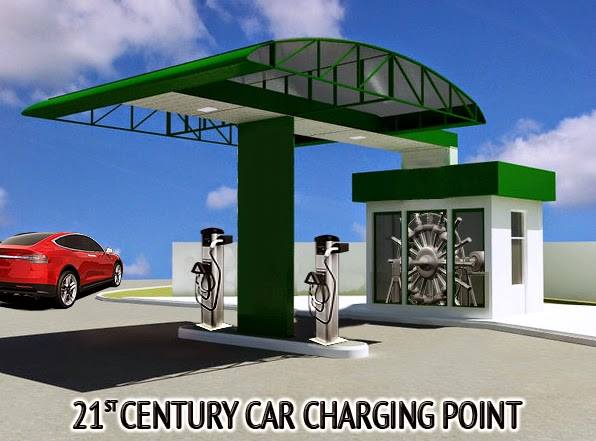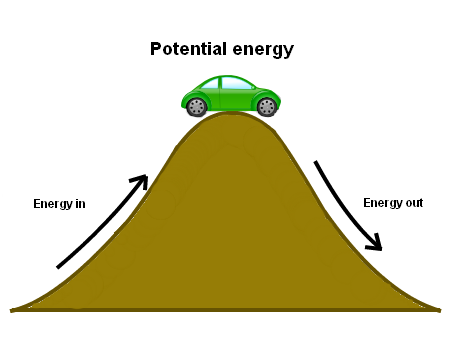The Kinmech Environmental Generator
A New Generation of Green Innovation
What do you call a waterwheel removed from the water?
The Kinmech Environmental Generator is modelled on the waterwheel, but not limited like the waterwheel.
Our Generator re-imagines the waterwheel for the Twenty-first century, removing the water and replacing it with an internalised fuel-system, to create a technology that is on the cutting-edge of the Green Revolution.
With Zero emissions and a versatility and adaptability that makes it suitable for any terrain or clime, this Generator represents a crucial breakthrough in energy-production for this new century.
The Environmental Generator works through a combination of Gravity, Kinetics and Weight Differential to transform Potential and Kinetic Energy into Mechanical Energy and thus into Electricity. The weight of the internal bullets ensures that the momentum of rotation of the Wheel is maintained in a similar manner to the water that powers a water wheel.
As you can see it looks suspiciously like a Water Wheel on dry land. And that, in essence, is what it is. However, this 'Water Wheel' does not need water to power it, or any conventional fuel for that matter. It has, you see, its own internalised fuel-system.
What are the Advantages over Fossil and other Conventional fuel-sources?

FOSSIL FUELS
First and foremost it should be noted that all Fossil Fuels are finite – sooner or later the ever-decreasing deposits of gas, oil and coal will dry up. There will come a day when there is no more. Secondly, while fossil fuels are still prevalently used the effect they have on the biosphere and the environment is often detrimental and long lasting. There are many reports in the Media and warnings from Scientists regarding the threat of Global Warming. The impact of fossil fuels can have a negative effect not only on the environment but also on the health of the population: the smog pervading some of the major urban centres of China is a direct consequence of a heavy dependence on coal-usage. The detriments of coal, oil and gas usage are indeed manifold – the extraction process disfigures large areas of land and can lead to the uprooting of Communities. Transportation is not only costly moneywise but can also be costly in terms of human, animal and marine life – oil spills, gas explodes.
WATER/HYDROELECTRIC
The use of water for producing energy is necessarily limited in scope: it depends on a constant supply of water. If there is no water there is no energy. Water containment, such as the building of dams, in order to attempt to ensure a constant supply of water is not only very expensive and often involves huge construction projects, but can also prove to be, in the long run, ineffective, or, at best, to offer only an intermittent supply of water: rivers have the tendency to dry up. Hydroelectric dams also have the potential to flood or to be dependent on particular flows or pressures of water. Flooding dams have been responsible for the decimation or complete destruction of towns and communities across the world. Dams are also particularly susceptible to earthquakes.
SOLAR ENERGY
The obvious disadvantage of solar energy, like water, is the limited or intermittent nature of its supply. Cloud-cover blocks sunlight: no sunlight, no energy. Solar batteries store a certain amount of energy as reserve, but if not quickly replenished it is soon depleted. There are different types of solar power technology, notably Passive and Photo-Voltaic that provide differing degrees of effectiveness. The instalment of such technology can, however, be expensive and the production costs of the materials used are quite high. Solar energy also depends on volume – the bigger the panel/s, the more energy; the smaller, the less energy is produced. Other factors to consider are: the susceptibility of the materials used to the effects of weather, breakage, etc.
WIND
Wind Energy suffers from similar disadvantages to that of water and solar power – the intermittent and erratic nature of supply. The inconstancy of the wind determines the level of energy produced at any particular time. Aesthetically, wind turbines have proven to be unpopular, often being seen as a blight on the landscape. They also have a tendency to break or fracture in winds of excessive force.
NUCLEAR POWER
Nuclear Power is often the power of choice for a lot of the mainly developed countries, because it is both highly effective and in one sense provides a source of clean energy. However, the great disadvantages of Nuclear Power are threefold. Firstly: Nuclear Power Plants are sometimes prone to reactor failure and the consequences of such an event can be catastrophic and long lasting; one has only to mention Chernobyl and understand the fallout from that disaster in order to see the type of tragedy that can ensue when nuclear meltdown occurs. Over and above this there is the question of the disposal of radioactive waste. This waste has a half-life of a thousand years, which means that this waste will remain highly toxic for up to five hundred years. The disposal of this waste is a very delicate and highly expensive operation. Nuclear Power Plants are also very expensive to build and, once built, to monitor and maintain.
KINMECH ENVIRONMENTAL GENERATOR
The Kinmech Environmental Generator turns the disadvantages of wind and water energy to its advantage by utilising a similar technological apparatus, but with the crucial difference that the fuel source, instead of being external (whether natural or man-made) has been internalised. This means that there are no extra costs for fuel or fuel transportation. Secondly, there are no dangerous or harmful emissions given off by this generator and so it is therefore entirely environmentally friendly. Another advantage the Kinmech Generator possesses is its versatility: it can be used in very different extremes both hot and cold and in different terrains. The generator will be covered or placed out of sight so will not be aesthetically displeasing. Compared to other energy-producing technologies this generator is very economical to run. It also provides cleaner energy and is a very effective form of energy production.

PRODUCT APPLICATIONS
- Industrial backup generators and co-generation
- Automotive Hybrid Electric power plants
- Heavy-Duty Hybrid Electric Truck power plants
- Hybrid Electric Farm Machinery & Equipment power plants
- Hybrid Electric Construction Machinery & Equipment power plants
- Marine Hybrid Electric power plants
- Utility co-generation
- Telecom Industry
There are many Industries that are energy-intensive, consuming huge amounts of energy and often for very little in return. The Steel, Oil and Mining Industries are prime examples of this. Most importantly, the cost of energy consumed in the smelting, drilling and extraction processes has a knock-on effect for the consumer of these products: the greater the energy-costs the higher the product’s market price.
Perhaps the most energy-intensive industrial process is Desalination – making sea-water fit for human consumption. Water is everywhere in short supply, and there is a growing concern that, as the population continues to rise, eventually demand will outstrip supply. The amount of usable water on the planet – and remember, the Earth is two- thirds water – is a miniscule 0.1 of a percent, and that is growing less by the year as underground Aquifers are drained at an ever faster rate. So, there is a huge and growing demand for more usable water, and cheaper methods sought for the Desalination process.
Using conventional methods the Desalination process, at present, is far from being cost-effective: the cost of desalinating a given amount of water is disproportionate to the actual return you can expect to make for the sale of that water. In short, you are making a loss and not a profit. So, currently there is very little money to be made in this Industry but at the same time a huge demand for clean, drinkable water. This cost-ineffectiveness is, as stated above, mainly a consequence of energy costs. Conventional energy-producing technologies are expensive to run and, moreover, require a constant supply of fuel to keep them running. So, in many cases you are paying not only for the fuel but also for the cost of its transportation.
With a cheaper form of energy-application such as our Generator, which requires no conventional fuel or fuel supply, costs could be reduced considerably. This applies right across the board: in every industry that is energy-intensive our Generator could significantly reduce energy costs.
The fact that our Generator also produces clean energy – it has zero emissions – is clearly another positive factor for its adoption in those countries where methods of energy-production are still strongly reliant on fossil fuels and are therefore contributing still to the planet’s growing environmental crisis. Heavy industry and outmoded forms of energy-production are the prime culprits here. You only have to recall the Beijing Olympics in 2008 and the scenes of a smog-enshrouded city to realize the validity of this. That smog was the result of burning coal – huge amounts of burning coal – from Industrial Complexes and Power Stations. It might come as a surprise to learn that coal is still heavily used in China and is still one of the most commonly used forms of energy worldwide.
Just imagine the amount of energy poured into the mining process for the extraction of that coal, and then imagine the highly deleterious effects of all those billions of tonnes of coal burning around the world. And then think about the consequences of changing this unsustainable situation, of replacing all of these harmful forms of energy with cleaner more effective forms. It is not impossible, but the will and determination have to be there. And the desire. As someone once said: revolution begins in the mind.
With appropriate maintenance and replacement of any worn parts carried out every few months, this Generator will run as consistently and steadily as a standard Generator. But unlike a standard Generator it will not require any conventional fuel.
You now have a Generator that can be used universally in extremes of weather both hot and cold and will be ideal to plug the gap in the Market for more remote and less accessible regions of the globe - regions perhaps where any kind of energy infrastructure is difficult to maintain or is of only a rudimentary nature. It can be used to power Telecom Towers; It can be used to power charge-points for electrical cars.

We also envisage the Kinmech Generator being used to power both Trams and Trains. An illustration is given for how this might be done: a Train divided into carriages with an engine at the front and back will have the Generator situated in one of the middle carriages. A Tram, being much smaller than a Train, will have a separate covered compartment at the rear that will generate power to the engine.


Combined with this advantage there is also the addded value that no conventional fuel is required to power this Generator. This removes all fuel costs from the equation. It also makes the Generator totally environmentally friendly.

In our present world ‘Climate Change’ and ‘Global Warming’ are two catchphrases that are never far from the news. Rising sea-levels, the destruction of the rainforest, hurricanes, typhoons, freak-storms and many other incidences of disturbed weather patterns which are definite indicators of biospherical upheaval, are widespread and prevalent occurrences. Droughts and long, hard winters are also instances of shifting weather patterns. Many scientists agree that this is a man-made problem and that only mankind can solve it. Recent reports state that preventative measures already in place have so far contributed to the reduction of harmful emissions in most of the major industrialised countries such as the United States, China and India. But much more still needs to be done to halt this catastrophe waiting to happen.
Green technologies are the vanguard of the coming revolution in energy provision and our Generator is at the forefront of that vanguard in terms of bio-compatability, efficiency and economy. Can you imagine a world in which such technologies are commonplace? A world that is allowed to recover from the wounds we have inflicted upon it? A world that is cleaner, healthier and more settled? This is a world that we at Senitron are intending to help bring about.
Energy-provision is very much at the forefront of people’s minds at the moment as demand grows and prices rise. Alternative sources of energy are being investigated and sought in a bid to challenge the monopolisation of the large Corporate energy-suppliers. The demand to build more Nuclear Power Stations is not an appropriate solution of the problem of energy supply; but planning and building an infrastructure to support the widespread use of Green Technology is. The impetus for this has to be there, of course, and there are positive indicators to show that this is increasing. Recently, for example, the Prime Minister of the UK, David Cameron declared that even though there was no clear consensus on Global Warming the evidence was compelling enough, and that to err on the side of caution makes more sense than taking no precautions at all. A determined shift of perception is therefore inevitable regarding the necessity for Green Technologies and anyone seeking a sure investment could hardly go wrong by investing in this area.
The Kinmech Environmental Generator is innovative technology that emphasises economy, efficiency and clean energy, the three crucial main factors that any energy-producing technology in the twenty-first century must possess in order to compete successfully. What gives this Generator the edge over competing models is its versatility and range of application and the fact that it does not require conventional fuel to power it. It is, crucially, almost totally environmentally friendly. What better way to ensure a cleaner, brighter future than to invest in a technology of the future? The green revolution is coming and the opportunity is here for you to be one of the first to make it happen.

OPERATING PRINCIPLES
What follows is a detailed explanation of the operation of an Environmental Generator that works through a combination of Gravity, Kinetics (Movement) and Weight Differential to transform Potential Energy and Kinetic Energy into Mechanical Energy and thus into electricity.
Analogously this form of energy can be described thus: a hand holding a hammer readied to hit a nail is potential energy. The hand's movement as it goes to hit the nail is kinetic energy. And when the hammer hits the nail that is mechanical energy.
Transposing this to the Generator: potential energy is represented by the wheel in its static phase (when the break is on); kinetic energy is represented when the brake is released and the wheel is set in motion and mechanical energy is represented in the transference of the wheels movement to the generator via the shaft connected to the wheel and the Generator. The outcome of all of this is the production of electricity.
The operating principles of the Generator are very simple. The key factors involved are: denial of equilibrium and weight-differential. The latter ensures the former, and we will now explain how this is achieved:
By ‘denial of equilibrium’ we mean to say that the Wheel, once set in motion, is not allowed to stop spinning (until, that is, friction generated by the moving parts – rods, springs, bullets – necessitates a service or partsreplacement) because of a weight-factor – in the form of Bullets/Projectiles – that has been added to this particular operating- system. As mentioned elsewhere in these pages the Generator is based on the model of the Waterwheel and the Waterwheel, by common consent, is a power-generating technology that is the embodiment of simplicity itself. If you picture a Waterwheel you will immediately acknowledge that the Wheel as it rotates engenders a recurring pattern whereby one side is always submerged in and the other side is always free of the water. The submerged side –the right side of the Wheel - we will call ‘weighted’ (through the pressure of the water) and the un-submerged side – the left side of the wheel - ‘un-weighted’ (no water affects it). Accordingly, with the Wheel’s clockwise rotation the weight is always felt on the right side.
As with the Waterwheel so with this Generator: the weight is always falling to the right with the momentum of the Wheels’ rotation. Simply substitute the Bullets for the Water and you will have a clear understanding of the process involved.
But there is a crucial difference between the water powering the Waterwheel and the Bullets/Projectiles powering the Generator: in the former case the power-source is external while in the latter it is internal. And it is precisely in the internality of its fuel-system that this Generator has a significant advantage over its competitors, lending it a versatility and adaptability beyond those of a standard Generator.
As to how these Bullets/Projectiles achieve the above effect we will now endeavour to explain: each ‘arm’ or ‘spoke’ (of which there are sixteen in all) of the Wheel is identical in look and function, thus, by explaining the operating- mechanism within one ‘arm’ this will be sufficient to explain the functioning of the system as a whole.
We now ask you to picture this ‘representative arm’ as it rotates into the firing position. First, It must pass through the Outer-Gate-System which enables a firing-lock to be released triggering a ‘primed’ spring which fires the Bullet with sufficient force to enable it to travel at speed through the CentralCrossover-Point and pass, via the (Inner) One-Way-Gate-System – which closes behind it like the doors of a Trap-Door pulled down, preventing the Bullet from falling back (exactly replicating the operation of a One-Way Valve) – to the opposite end of the ‘arm’, where the whole process is repeated when the ‘arm’ once again reaches the firing position.
Each Bullet is fired from the same position – as it rotates through the Outer-Gate-System – and therefore follow the same trajectory (straight up through the centre of the Wheel); and at the apex of their trajectory fall with the rightward momentum of the Wheel always to the right, leaving the left side completely unaffected. As you will recall, this is exactly the operating-procedure of the Waterwheel where the right side is always heavier (weighted) than the left side. It is important to stress that just as every ‘arm’ must first rotate into the firing position in order to trigger the bullet’s firing, so the increments (1-3 seconds) between one bullet firing and the next, ensures that, at the Crossover-Point, the Bullets do not collide with each other. The similarity of the principle at work here to the firing-mechanism employed in the old World War One and Two Fighter Planes, where the Machine-Gun’s firing was precision- activated and co-ordinated by the rotation of the Propeller, is entirely coincidental. If the co-ordination achieved between the Propeller’s rotation and the Bullets’ firing was not precisely timed the end result would have been a bullet-shredded Propeller and a very different outcome to the war. Likewise with this Generator: if the Bullets were to collide at any point the entire system would become chaotic and break down.
The energy conversion resulting from this operating- system is also simple and straightforward: Kinetic Energy is converted into Mechanical Energy. This energy-conversion allows the Wheel to spin and to keep on spinning until, as aforementioned, the wear and tear caused by friction necessitates remedial intervention. The Electricity Generating-System you attach to the Wheel will then power a house or an Industrial Plant. The output of the Generator will range from 15000kw to 1Mw.
It is important to note that the Generator itself is not engaged immediately. After the release of the Brake which sets the wheel in motion, a period of about two minutes ensues where the Wheel slowly gains momentum and the Generator is then engaged. You can compare the speed of the Wheel to that of the average Wind Turbine, and while this might seem slow you must remember that the Gear-System is operating at a much faster rate, spinning at over 1000RPM.
To sum up: the Generator is a power-generating Technology that offers a viable and effective solution to the energy crisis confronting the Twenty-First Century. It is based on a much-used, long-serving technology – the Waterwheel – but is not confined by that models location and fuel-dependence, instead possessing a versatility and adaptability that will ensure that it thrives on the energy market.
